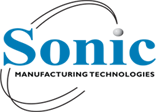
5 Critical PCBA Cost Factors
Not taking PCBA cost factors into account before going into production could be hurting your bottom line and hindering business growth.
In the short term, prohibitive small order PCBA costs can prevent innovative concepts from ever reaching the prototype stage. Over the long term, untamed PCBA costs can sink your products’ profit margins.
It pays to be aware of what drives PCBA cost factors before you start development.
The 5 Key PCBA Cost Factors
The 5 biggest PCBA cost factors are similar to what drives costs up in other manufacturing and supply chain industries. The more idiosyncratic your needs and requests, the higher your costs will be. Try to avoid unnecessary novelty in the following five areas to keep your costs down.
1. Materials
Once chosen, material costs are immutable. Though it may be tempting, don’t order or request materials that are not going to enhance what your boards need to do. You can save on material costs by carefully determining which material type is “good enough” for your project before you go into production.
Whenever possible, use standard board materials. In many cases, FR-4 with glass reinforcement is a proven and affordable default. Laminate is often one of the most expensive PCBA cost factors. Keep this in mind when adding board layers.
Always take time in the early stages of development to choose appropriate materials. The best contract manufacturers have a team of experts helping you create an efficient bill of materials (BOM).
2. Board Sizing and Layering
You can work with your PCB fabricator to ensure that your board size is optimal to maximize board production volume during panelization. Comprehensive board manufacturers will have a team of engineers available to make sure you don’t select a board size that is unnecessarily large – saving you money.
When space is tight on a board, layering is an option. Layering always adds cost, however. It requires the amount of laminate needed and requires thicker components – leading to more expensive board etching.
3. Production Process
The more complicated your board, the more likely it is to require customized production services. Try to keep your board design as standard as possible to avoid extra charges. Common adaptation areas that increase cost include:
- Inner-layer modifications
- Depanelization
- Drilling
- Soldering and solder pasting
- Board graphics printing
- Inspection and testing
4. Order Volume and Turnaround Time
The more boards you order, the less expensive each board may be. If you’re working on a prototype or a testing product, understanding volumes and preparing the factory in advance can prevent product delays and may reduce costs. Requiring a quick turnaround time will increase the cost depending on requirements for time, capacity and materials.
5. Labor and Transportation Costs
Labor costs are unavoidable. You may choose to outsource your PCBA production to a facility overseas with slightly more affordable labor. Doing so will likely add additional transportation, travel and tariff costs, not to mention delays in delivery. Using a regional supplier allows for immediate and personalized quality control and feedback, as well as fast delivery, offsetting the labor cost difference.
Minimize These 5 PCBA Cost Factors to Increase Your Profit
The above PCBA cost factors can be mitigated through early planning. Partnering with a reputable PCB manufacturer will help you reduce these costs at every stage of the PCBA development process.
Work with Sonic Manufacturing Technologies to minimize your PCBA cost factors. Contact us today to learn how we can help you with your next order.
CALL FOR A QUOTE
(510) 580-8500
OR EMAIL:
Sales@Sonicmfg.com
